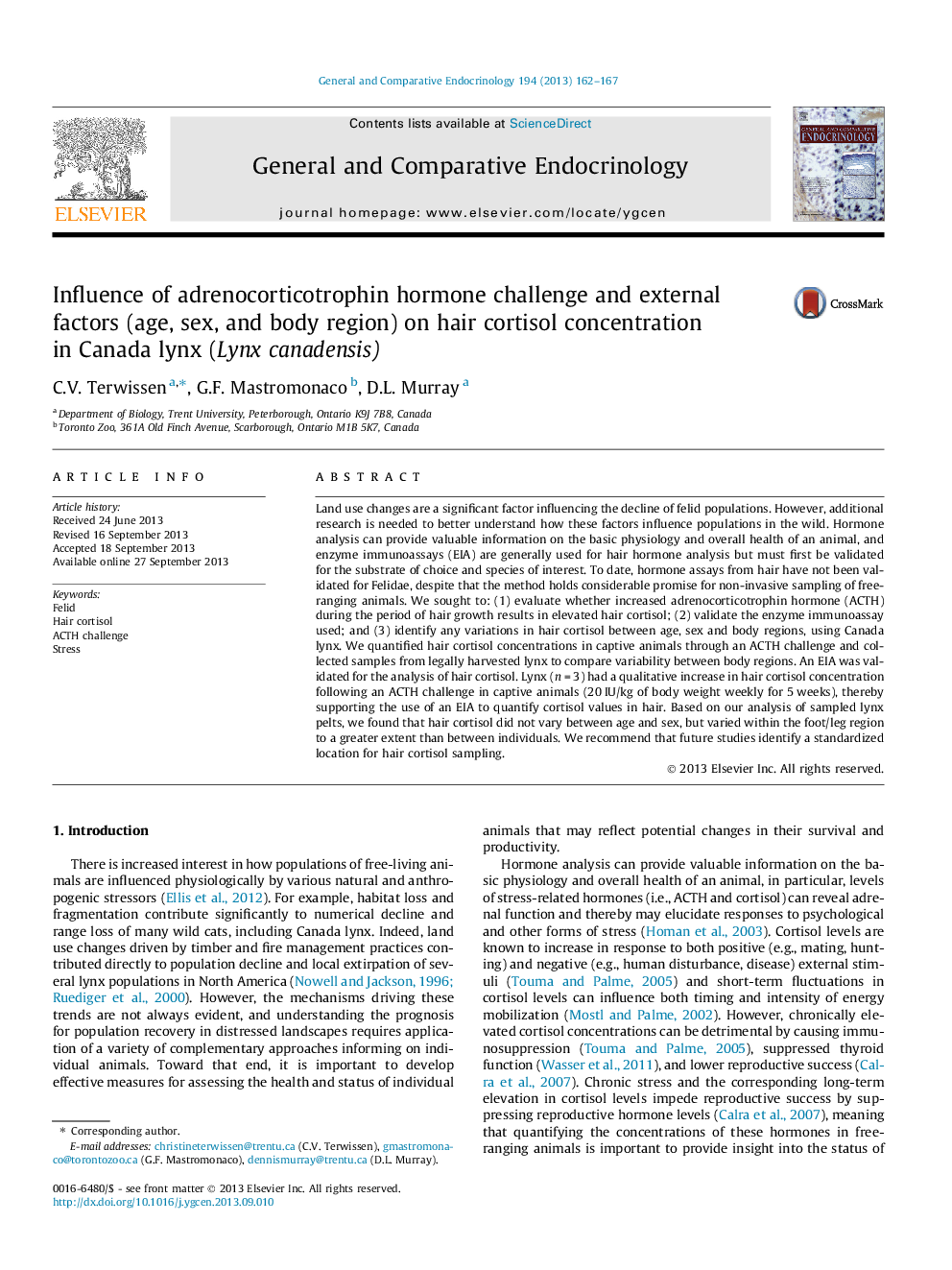| Article ID | Journal | Published Year | Pages | File Type |
|---|---|---|---|---|
| 2800308 | General and Comparative Endocrinology | 2013 | 6 Pages |
•Validated EIA to quantify hair cortisol concentrations in Canada lynx.•Demonstrated hair cortisol concentration increases after ACTH challenge in captive lynx.•Showed hair cortisol concentration does not vary with age and sex, but does vary with body region.•Suggested hair cortisol concentration samples be collected from a standardized region.
Land use changes are a significant factor influencing the decline of felid populations. However, additional research is needed to better understand how these factors influence populations in the wild. Hormone analysis can provide valuable information on the basic physiology and overall health of an animal, and enzyme immunoassays (EIA) are generally used for hair hormone analysis but must first be validated for the substrate of choice and species of interest. To date, hormone assays from hair have not been validated for Felidae, despite that the method holds considerable promise for non-invasive sampling of free-ranging animals. We sought to: (1) evaluate whether increased adrenocorticotrophin hormone (ACTH) during the period of hair growth results in elevated hair cortisol; (2) validate the enzyme immunoassay used; and (3) identify any variations in hair cortisol between age, sex and body regions, using Canada lynx. We quantified hair cortisol concentrations in captive animals through an ACTH challenge and collected samples from legally harvested lynx to compare variability between body regions. An EIA was validated for the analysis of hair cortisol. Lynx (n = 3) had a qualitative increase in hair cortisol concentration following an ACTH challenge in captive animals (20 IU/kg of body weight weekly for 5 weeks), thereby supporting the use of an EIA to quantify cortisol values in hair. Based on our analysis of sampled lynx pelts, we found that hair cortisol did not vary between age and sex, but varied within the foot/leg region to a greater extent than between individuals. We recommend that future studies identify a standardized location for hair cortisol sampling.
